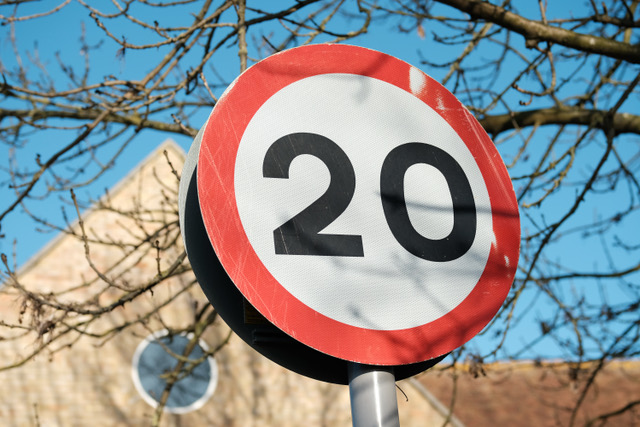Sadiq Khan’s war on drivers has continued as he has made every major road in five London boroughs a 20mph zone.
The new 20mph roads are in place in Camden, Islington, Hackney, Haringey and Tower Hamlets, with 17 miles affected. These include major routes, including Euston Road, Pentonville Road, Mile End Road and Seven Sisters Road.
Transport for London (TfL) plans to reduce an additional 87 miles of roads in inner and outer London by 10mph by May 2024.
This will see an overall reduction of 137 miles by the end of next year. This is part of Sadiq Khan’s ‘Vision Zero’ goal, which aims to eliminate death and serious injury from the capital’s transport network.
However, the RAC has stated that these limits are dependent on if the new limits are obeyed and adequately enforced.

At the same time, a study conducted by Queen’s University found that speed limits reduce traffic but not accidents.
Queens University compared four years of data covering before and after 20mph zones were introduced and showed a minor change in crashes, casualties or speeding offences.
These changes have come as drivers in London are in the midst of a ‘war on motorists’ with Khan, who intends to tackle air toxicity by increasing the ultra-low emission zone (ULEZ), adding additional cycle lanes, creating low-traffic neighbourhoods and carrying out constant roadworks.
RAC road safety spokesman Simon Williams said: “We believe it’s important that 20mph limits are used in places where they stand to make the biggest positive impact to road safety, such as where there are large volumes of motorised traffic, cyclists and pedestrians.
“Our research also shows drivers are less likely to take notice of 20mph signs if they don’t believe they’re appropriate for the type of road, so we hope TfL has thought carefully about where best to reduce the limit.”
He added: “Reducing an urban speed limit to 20mph undoubtedly improves safety for everyone, but a lot depends on how well drivers obey the limit.
“Without enforcement or traffic-calming measures, compliance is unlikely to be as good as it should be, which unfortunately limits how successful the lower limit will be.”
TfL has stated that these changes aim to tackle safety concerns and that making these changes it will play a ‘critical role’ in Khan’s Vision Zero plan.”
It has also been highlighted that if a pedestrian is hit by a vehicle at 20mph, they are roughly five times less likely to be killed than at 30mph.
TfL has stated that these new speed limits will be supported with new signs and road markings, with the current speed cameras being updated to target the lower speed. Additionally, banners attached to street lamps in the new 20mph areas will be implemented.
The TfL has confirmed that it will work closely with the Metropolitan Police to enforce up to a million speeding offences by next year.
This year, the police are expected to enforce roughly 650,000 speeding offences, an increase of approximately 30% compared to last year.
The Met police enforced 72% more speeding offences in 2021/22 compared to the previous year. In 2021/22, 476,685 speeding offences were enforced by the Met police.
London’s Walking and Cycling Commissioner, Will Norman, said: “The facts are clear, a person hit by a vehicle at 20mph is five times less likely to be killed than at 30mph.
“We are determined to build a safer, greener London for everyone and the continued expansion of the 20mph programme on TfL roads is playing a vital role in making the capital’s roads safer for people to walk, cycle and use public transport.
“This forms an important part of the Mayor’s Vision Zero plan and we will continue to work with colleagues in boroughs to keep improving the safety of London’s roads.”
Penny Rees, TfL head of healthy streets investment, said: “We are determined to eliminate deaths and serious injuries from London’s roads in line with our Vision Zero goal.
“Millions of walking and cycling journeys are made across London every day and a person is five times less likely to be killed if hit at 20mph than at 30mph.
“That’s why we’ve committed to reducing speed limits on our road network in the capital – and these proposals will make a real difference in cutting road danger and enabling more people to walk and cycle.
“We really value people’s feedback on our proposals and I’d encourage everybody to use this opportunity to share their views on our plans.”
